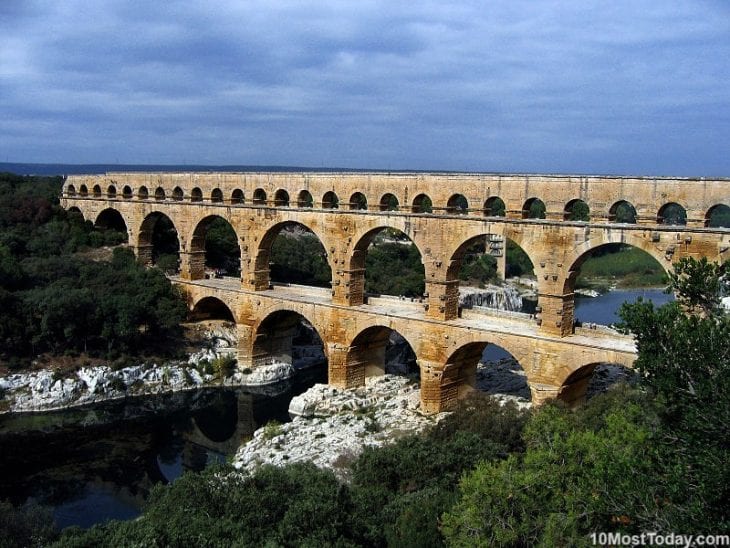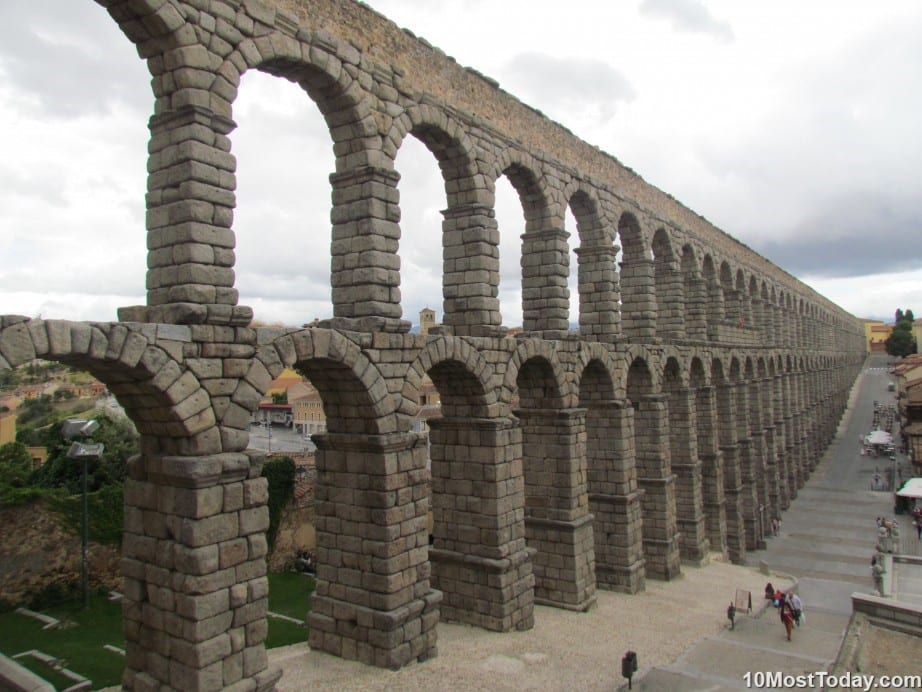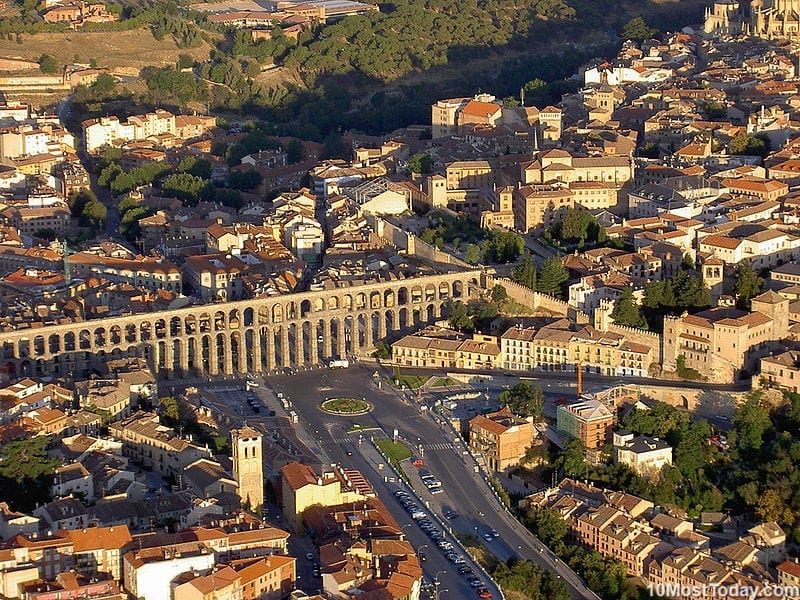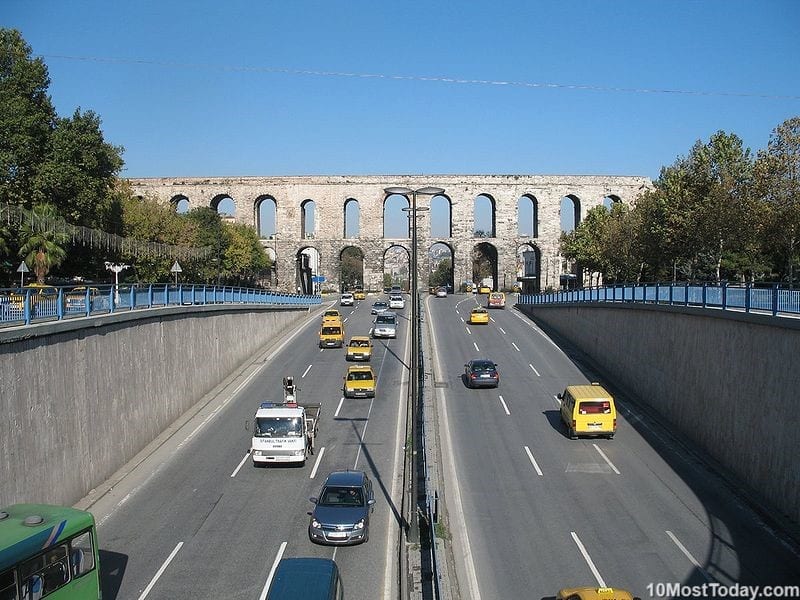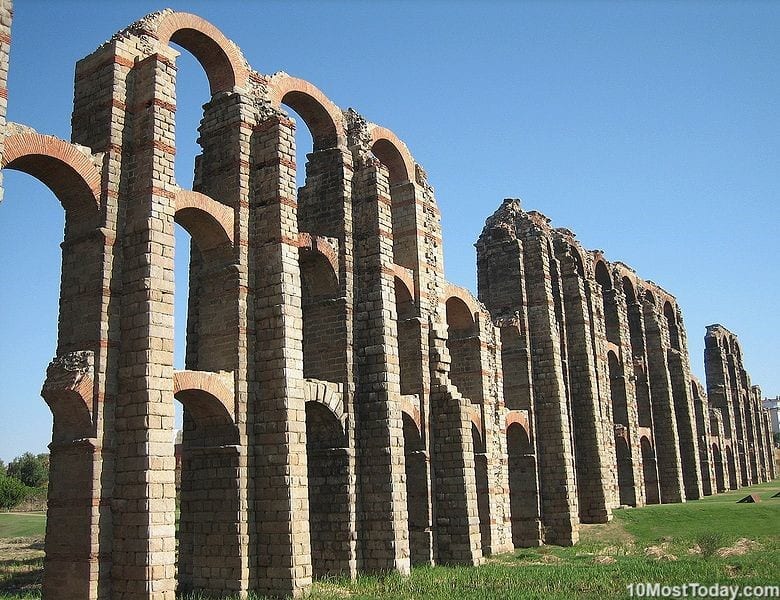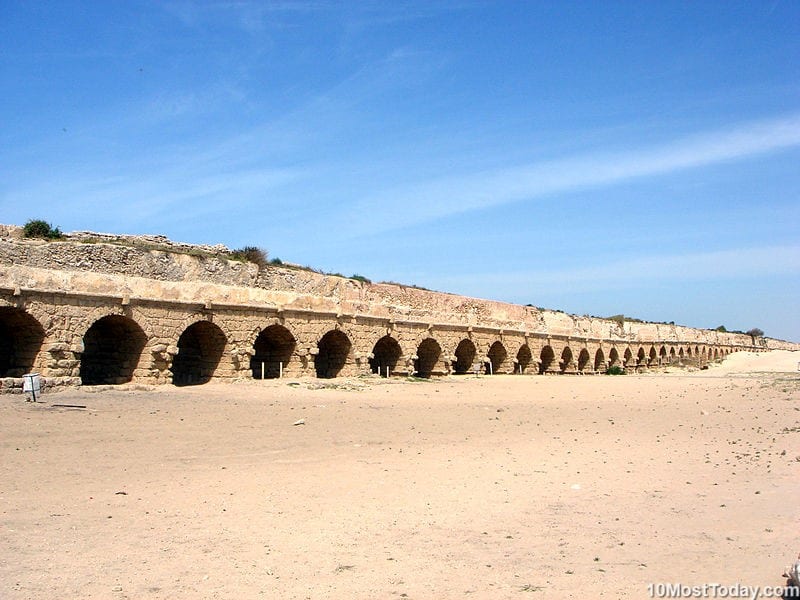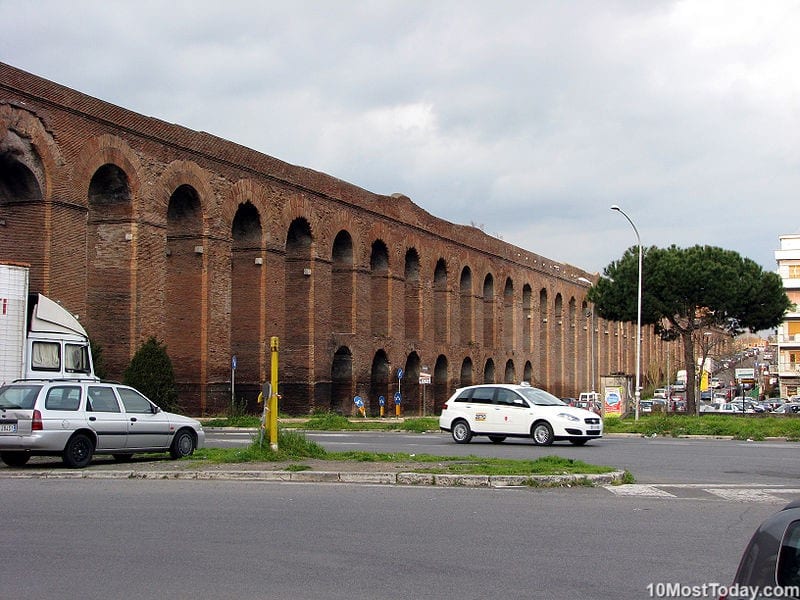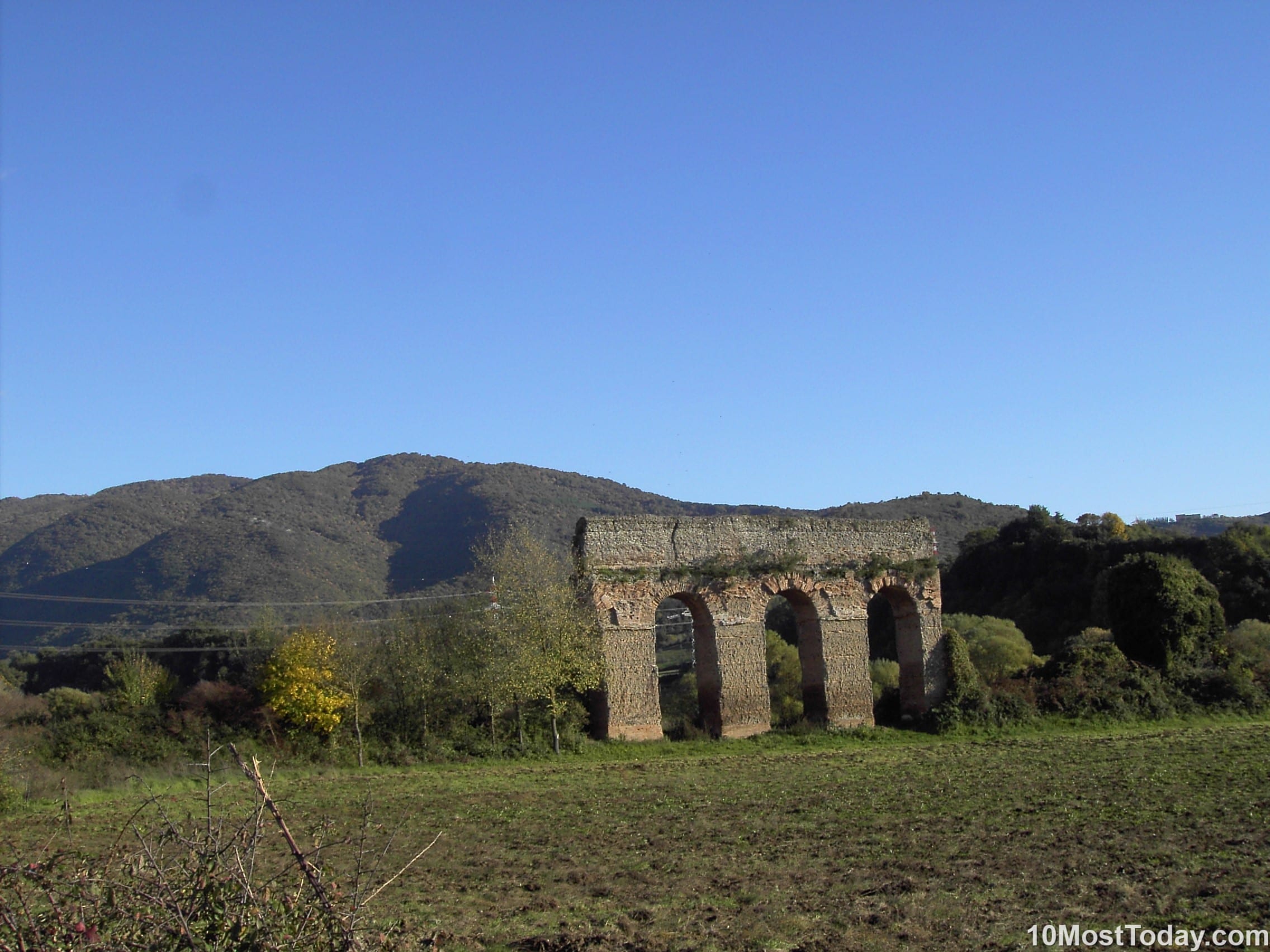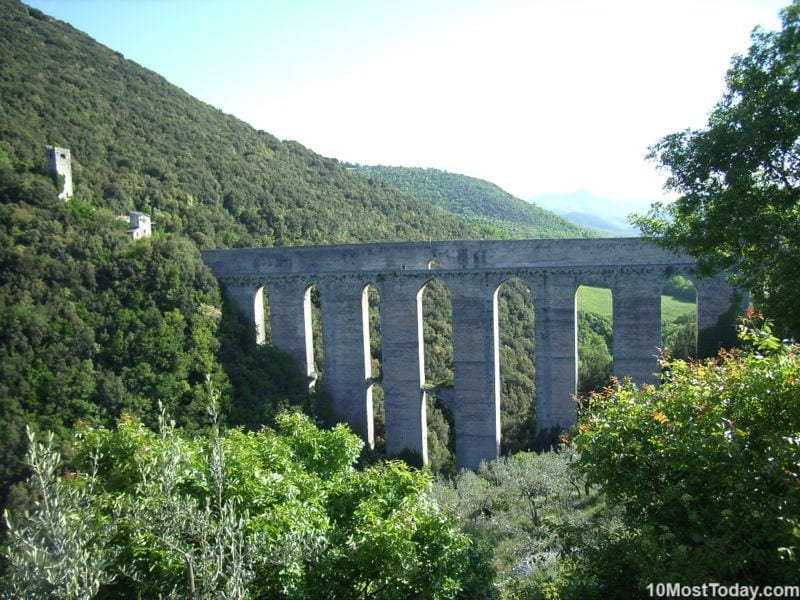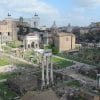An aqueduct is a man-made watercourse that was built to convey water from one place to another. During the prime years of ancient Rome the Romans built many such aqueducts all over Europe, in order to bring water from different sources into their cities. When needed, they built bridges as part of the artificial watercourse. The water was then used for many purposes – from public baths and fountains, till mining, farming and gardening. Some of these beautiful aqueduct bridges are very well preserved, and despite having been built for a functional purpose, they look like a piece of art
1. Pont du Gard, Gard, France – The Pont du Gard is a beautiful, and one of the best preserved Roman aqueduct bridges in Europe. The bridge crosses the Gardon River and is part of a 50 km (31 mi) long aqueduct that carried water to the Roman colony of Nemausus. Built in the first century AD, it is also the tallest aqueduct bridges, standing 48.8 m (160 ft) high
2. Aqueduct of Segovia, Segovia, Spain – Another beautiful Roman aqueduct, and one of the best preserved Roman structures in the Iberian Peninsula. Probably built during the first century AD, the aqueduct reaches a max height of 28.5 m (93 ft)
3. Valens Aqueduct, Istanbul, Turkey – The Valens aqueduct supplied water to Constantinople (modern Istanbul). It was completed by Roman Emperor Valens in the late 4th century AD, and later maintained and used for centuries by the Byzantines and Ottomans. The structure we see today is 921 meters (3021 ft) long, about 50 meters shorter than the original structure
4. Pont de les Ferreres, Tarragona, Spain – Also known as Pont del Diable, this Roman aqueduct bridge was part of an aqueduct that supplied water to Tárraco (modern Tarragona). The structure has a maximum height of 27 metres (89 ft) and a length of 249 metres (817 ft)
5. Miraculous Aqueduct, Mérida, Spain – The Miraculous Aqueduct or Acueducto de los Milagros is a mostly ruined aqueduct built to supply water to the Roman colony of Emerita Augusta (modern Mérida). Probably built in the first century AD, the aqueduct didn’t survive entirely and the section still stands today is 25 metres (82 ft) high and around 830 metres (2,720 ft) long. The beautiful Roman theater in Mérida was preserved better and is even in use for performances today
6. Caesarea Aqueduct, Caesarea, Israel – Caesarea Maritima was a city on the Mediterranean sea built in the first century A.D. by Herod the Great, who named it to honor his patron, Augustus Caesar. A double aqueduct was built to supply water from springs at the foot of Mount Carmel to the city. Today the city along with all the Roman remains (such as the Roman theater) are one of the best tourists attractions in Israel
7. Aqua Alexandrina, Rome, Italy – The Aqua Alexandrina was a 22.4 km (13.9 miles) long aqueduct in Rome that carried water from Pantano Borghese to the Baths of Alexander. Built in the 3rd century, in remained in use till the 8th century. The aqueduct bridge reaches its max height of 25 meters (82 ft) at the Viale Palmiro Togliatti where it can still be seen today
8. Minturno aqueduct, Minturno, Italy – Minturno is a city in southern Lazio. The city has many Roman remains, one of which is this aqueduct. While it seems quite neglected and not well maintained, the beautiful Roman architecture is still easily seen
9. Aqua Marcia, Italy – The Aqua Marcia was the longest aqueduct that supplied water to Rome, out of a total of 11 aqueduct systems. It supplied water to Rome from 91 km away near the modern towns of Arsoli and Agosta. The construction of the aqueduct began in the 2nd century BC. The small section in the picture is taken near Tivoli
10. Ponte delle Torri, Spoleto, Italy – This beautiful aqueduct is from the 13th century, obviously not a Roman aqueduct. However, it is possible that it is built on the foundations of an ancient Roman aqueduct. Expert opinions remain divided

